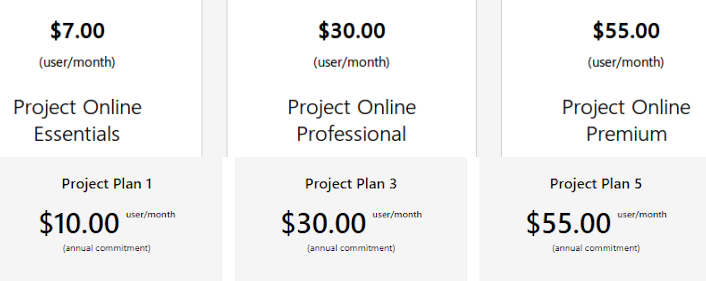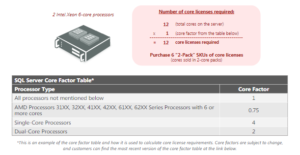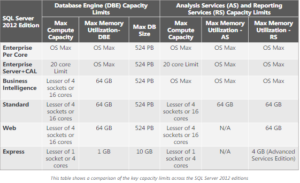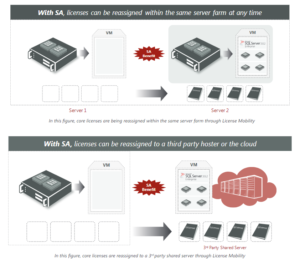It doesn’t matter if you’re working from your office or at home or up a tree, it seems that companies are rushing to take their business to the Cloud, and that includes where employees are expected to do their work. Microsoft has been quite aggressive in their focus to move their industry (and their customers) to their Cloud platforms, including their two most popular Cloud productivity services. Today we’re breaking those services down in a head-to-head comparison. It’s Microsoft Office 365 vs Microsoft 365.
While they may seem similar in name, they both offer unique levels of functionality and cost. So, which one is best suited to your needs?
At MetrixData360, although we are unaffiliated with Microsoft, we pride ourselves in educating our clients, so that businesses everywhere can make informed spending decisions regarding their software.
Office 365
To put it succinctly, Office 365 offers a variety of the most popular Microsoft products like Word, Excel, PowerPoint, and OneDrive, all of these offered programs are geared towards business productivity such as Skype for Business, SharePoint, Teams, Yammer, and Planner.
These services can be found either online or on-premise through a subscription-based payment plan. Plans with Office 365 offers to host Microsoft Exchange mailboxes. There are also additional add-ons that you can pay for, this includes additional security.
This is the main argument Microsoft will use to get you to switch to Microsoft 365, since with Microsoft 365, these add-on features are included in the package, as opposed to having to pay for additional fees. However, that doesn’t always mean the transition is worth it, especially if you are not expecting to use every feature in Microsoft 365.
To give you a taste of all the plans that are available to you, here are two different versions of Office 365:
Office 365 Business
This plan is an excellent, low-cost way for getting key components of Office 365 to your company with either the Essential, Business, or Business Premium plans. However, this skin-and-bones plan comes with a few drawbacks:
- It doesn’t allow for remote desktops to have access to Office 365.
- Office 365 Business is not compatible with Nerdio for Azure (NFA) environment, for instance.
Office 365 Enterprise
ProPlus, E1, E3, and E5 all offer varying levels of Office 365 Enterprise, which is aimed primarily towards providing Enterprise productivity.
Excluding the E1 license (which actually doesn’t include any application offered with it, only the services), all of these plans come with Office ProPlus and are suitable for Remote Desktop Service (RDS) environments. If you want to maintain any Nerdio environments, at minimum you’ll need an E3.
Changes to Office 365 ProPlus Licensing
Microsoft announced that beginning in the summer of 2020, Office 365 ProPlus plans would allow licenses to be assigned to Windows 10 devices as opposed to it being assigned to the user.
The same can be applied to Office 365 ProPlus for education. This can prove highly beneficial if multiple users are sharing one device. However, there are some catches when it comes to the device-based licensing. For instance, commercial customers can only use Office ProPlus through their EAs, and for education customers, they will only be able to access Device-based licensing for Office 365 ProPlus through their Enrollment for Education Solutions (EES).
In order to use this device-based licensing, customers must meet certain requirements:
- They must have Version 1907 or later for Office 365 Plus or Version 1803 or later if they have a Windows 10
- All Window 10 devices must be joined to Azure Active Directory or joined to hybrid Azure AD.
Microsoft 365
Microsoft 365 can basically be thought of as Office 365 with added bonuses. It’s a bundled offer of existing products, including Office 365, along with Windows 10 Pro and Enterprise Mobility + Security.
Windows 10 serves as Microsoft’s safest and latest operating system, complete with BitLocker and Windows Defender Anti-Virus. Mobility + Security is an extra layer of security for your data, including mobile device and identity management.
Microsoft 365 is the response for small- to medium-sized businesses who were going to purchase Microsoft 365’s three major components (Office 365, Windows 10, and Mobility + Security) separately on three different platforms. So, Microsoft 365 is marketed towards businesses who want to have a single, secure platform that can be shared across the company.
If you are negotiating any sort of contract renewal with Microsoft and you already have Office 365, you can expect pressure from Microsoft to scale up to Microsoft 365 from Office 365.
There are some obvious benefits to getting Microsoft 365; the fact that it is an all-inclusive package that provides a single platform for everything, creating an easier end-user experience, makes a compelling case. If you choose Microsoft 365, there are a few choices that are available to you.
Microsoft 365 Business
Centered around SMB deployment and designed for 300 users or less, this plan includes Office 365 Business and some of the most basic device management, although it is considered the next step up from Office 365 Premium plans.
It should be noted that this plan doesn’t use Office ProPlus in its package, which has significantly more features than Office Business. It’s really a win-some and lose-some situation.
Here’s a link for more information on the Microsoft 365 Business Plans.
Microsoft 365 Enterprise
This plan is marketed heavily towards larger businesses with an emphasis around strong security and device management functionality.
It bears a lot of resemblance to Office 365’s E3 and E5 plans with a bonus of Windows 10 Enterprise, EMS features, Azure Information Protection, Office 365 Advanced Threat Protection, and Microsoft Intune with availability on-prem and on the Cloud.
Microsoft Enterprise is broken down into three plan options: F1, E3, and E5.
Click here if you’d like more information on the Microsoft 365 Enterprise plans.
Microsoft 365 Education
Microsoft 365 Education is another exclusive offer that is given to schools that can be used by both teachers and students. There are three plans that are offered with Microsoft 365 Education:
- A1 – The basic package which includes the lowest tier information protection, and a free, although limited, version of Office for students and teachers.
- A2 – The standard suite, which includes everything in A1 with the addition of all the Office desktop apps and strong information protection and security.
- A3 – The premium tier includes everything from A3, plus advanced security and compliance tools, along with top analytic systems.
Click here for more information on Microsoft 365 Education plans.
Office 365 Reporting Tool: Why is it Important?
Regardless of which plan you pick, it’s important that while you are using Office 365, you have a means to effectively monitor your usage. This will allow you to predict and potentially eliminate any consumption issues before they arise in an audit.
To address this issue, at MetrixData360, we have our exclusive Office 365 Consumption Reporting Tool available for installation. There are a few main benefits that come from having Office 365 Consumption reporting on your side, including but not limited to:
-
Detecting Multiple Subscriptions
MetrixData360 have often seen that our clients will have multiple subscriptions for Office 365 that they have accidentally repurchased over time. These redundancies often make for a quiet drain on the IT budget.
-
Tracking Consumption of Subscriptions Over Time
Being able to track your use of subscriptions will allow you to track not just how much you owe, but also what sort of value these subscriptions are bringing to your company.
-
Detecting Blocked Users
How do you know you have a subscription when you don’t have access to an application or program?
It may seem as though those two situations are polar opposite of each other, but we have often seen that case appear unknowingly in the software profiles of the clients that we have examined.
Sometimes this blockage is intentional, but other times the customer is unaware of these users and by removing their subscriptions they can save a lot of money.
-
Detecting Last Usage
MetrixData 360’s Office 365 Consumption Reporting tool can pick up if an account hasn’t been active in 90 days or longer.
Such inactivity usually means that the account has been retired (or at least attempted to be) or it simply belongs to a user who doesn’t need the subscription.
Either situations can easily remain a drain on your budget and presents the potential to reclaim licenses.
For more information on how MetrixData360’s Office Consumption Reporting Tool can give you control over your software spending and usage, check out our tools page for more information!
To Summarize
With so many different plans and packages to pick from, the Office 365 vs Microsoft 365 debate comes down to what is right for you.
So long as you have a means of keeping track of that consumption, you can certainly find a package that fits your interests without proving a drain to your software budget.
At MetrixData360, we have often seen companies either underestimate their usage, leaving them at risk for compliance issues; or we have seen them overspend eroding their IT budget.
We know how to navigate our customers around such pitfalls when it comes to their software. If you’d like to learn more about how MetrixData360 can give you the visibility you need, contact us and we’d be happy to answer any of your software licensing related questions.











